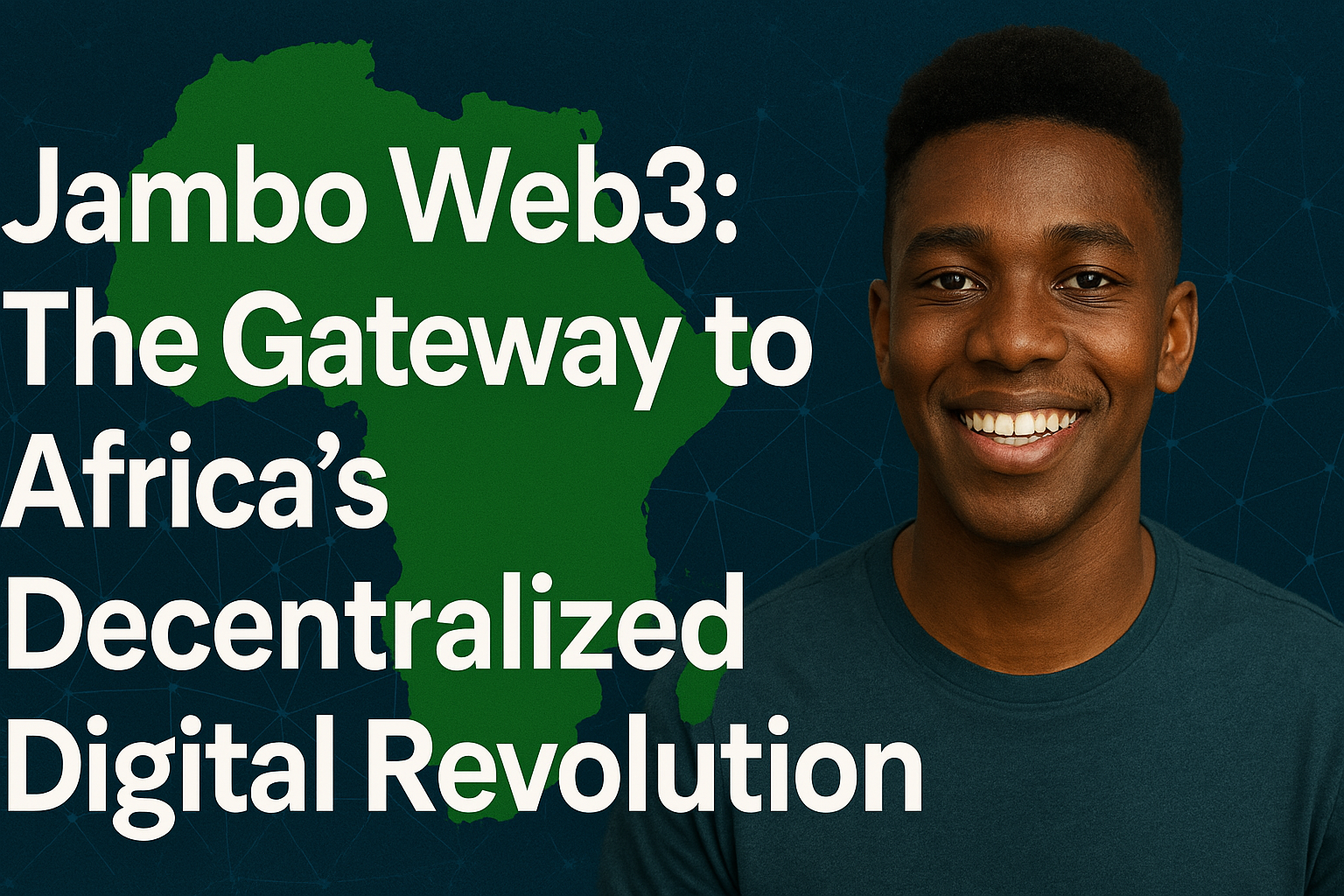The Jambo Web3 Movement: A Ground-Level View
In 2022, I found myself at a blockchain meetup in Nairobi, where a group of college students was buzzing about a platform called Jambo Web3. I was intrigued. Most of these students didn’t have tech backgrounds, yet they were actively trading NFTs, diving into DeFi, and even managing small community nodes—all from their mobile phones.
That was my first introduction to Jambo Web3. This platform isn’t just another blockchain startup; it’s a movement born in Africa that’s changing the way digital infrastructure is developed from the ground up. What sets Jambo Web3 apart isn’t just the technology—it’s its reach. In a continent where more than 72% of internet users connect via mobile, Jambo recognized an opportunity that many overlooked.
Their mission? To empower young people with the tools they need to engage in the Web3 economy without the need for costly laptops or extensive technical expertise. In just the past year, Jambo Web3 reported onboarding over 200,000 users across 15 African countries. That’s not just talk—that’s real data.
Education and Earning: The Dual Engine of Jambo Web3
What struck me most was Jambo’s innovative approach to education. Rather than promoting speculative trading, they’ve integrated learning modules right into the app. Through gamified learning, users can earn small crypto rewards for completing lessons on wallets, DeFi protocols, and even smart contracts.
I met a 19-year-old student from Ghana who used Jambo Web3 to learn the basics of Solidity coding. Within six months, he was contributing to open-source Web3 projects. He shared with me, “Jambo gave me more than just crypto. It equipped me with skills I can use to earn in dollars.”

There’s a quiet revolution underway. Many young people in Africa face unemployment or underemployment, yet smartphone usage is on the rise. Jambo Web3 is bridging this gap by offering mobile-first access to income-generating opportunities like airdrops, surveys, staking, and micro-tasks.
A recent case study from TechCrunch Africa revealed that users in Nigeria and Kenya managed to boost their daily income by as much as 30% through Jambo Web3’s in-app tasks. This is significant for individuals living in economies where inflation often exceeds double digits.
A Real Shot at Financial Inclusion
From my own perspective, trying to introduce Western-designed DeFi platforms to African communities feels like handing someone a sports car without teaching them how to drive. The tools are available, but the entry barriers are too steep. Jambo Web3 has changed this by creating a user-friendly mobile interface.
The Jambo ecosystem goes beyond just education. They are also developing a layer-2 blockchain that emphasizes scalability and low gas fees, specifically designed for emerging markets. This is vital since Ethereum gas fees have historically posed a significant obstacle for small-scale users.
What’s even more remarkable is that Jambo Web3 secured over $30 million in funding from investors like Coinbase Ventures and Tiger Global. However, rather than chasing trends, they are focusing on investing in local community hubs, training centers, and hackathons in cities such as Kampala, Addis Ababa, and Johannesburg.
This indicates that they are not merely creating a product—they are cultivating an ecosystem. As someone who has been involved in the startup scene, I can say that this level of commitment is rare.
Where It’s Heading: Risks and Realities
No technology is a perfect solution, and Jambo Web3 faces its own challenges. The regulatory landscape surrounding crypto in many African countries remains unclear. Internet access is still an issue in rural regions. Additionally, the lack of financial literacy could lead some users to make risky decisions.
But let’s be real for a moment—what’s the alternative? Youth unemployment in Sub-Saharan Africa is expected to hit 40% by 2030. Without access to global markets or new skills, millions will be left behind. Jambo Web3 at least provides a pathway forward—one rooted in empowerment rather than dependency.
During my recent trip to Kigali, I had the opportunity to visit one of Jambo’s training centers. I walked into a room filled with young people engaged in discussions about DAOs, privacy coins, and validator nodes—all in three different languages. This isn’t just about building a community; it’s about building capacity.
While Jambo Web3 may not solve every problem, it’s certainly making waves that could lead to significant change.
Final Thoughts from the Ground
I’m not here to promote technology blindly. I’ve witnessed both the excitement and the disappointments that come with crypto. However, Jambo Web3 is doing something that few others are attempting—equipping young people in Africa with the real tools they need to engage in a new internet economy.
Having spent over seven years reporting on technology and its social impact, I see movements like Jambo Web3 as more than just passing trends. They represent real transformations. And while the global tech scene continues to chase after the next big success story, this quiet revolution in Africa might just be the one to keep an eye on.




Leave a Reply